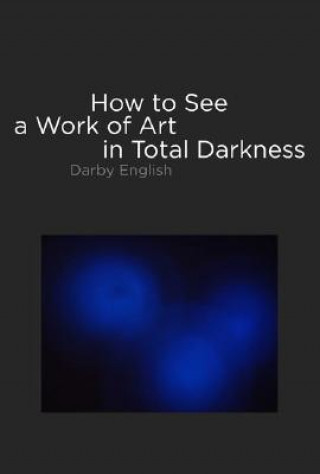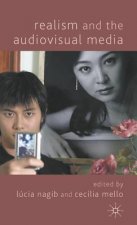
Doručení
Nákupní rádce





Nehodí se? Vůbec nevadí! U nás můžete do 30 dní vrátit
 Dárkový poukaz
V libovolné hodnotě
Dárkový poukaz
V libovolné hodnotě
S dárkovým poukazem nešlápnete vedle. Obdarovaný si za dárkový poukaz může vybrat cokoliv z naší nabídky.
How to See a Work of Art in Total Darkness
 Angličtina
Angličtina
 129 b
129 b
30 dní na vrácení zboží
Mohlo by vás také zajímat


Work by black artists today is almost uniformly understood in terms of its "blackness," with audiences often expecting or requiring it to "represent" the race. In How to See a Work of Art in Total Darkness, Darby English shows how severely such expectations limit the scope of our knowledge about this work and how different it looks when approached on its own terms. Refusing to grant racial blackness--his metaphorical "total darkness"--primacy over his subjects' other concerns and contexts, he brings to light problems and possibilities that arise when questions of artistic priority and freedom come into contact, or even conflict, with those of cultural obligation. English examines the integrative and interdisciplinary strategies of five contemporary artists--Kara Walker, Fred Wilson, Isaac Julien, Glenn Ligon, and William Pope.L--stressing the ways in which this work at once reflects and alters our view of its informing context: the advent of postmodernity in late twentieth-century American art and culture.The necessity for "black art" comes both from antiblack racism and resistances to it, from both segregation and efforts to imagine an autonomous domain of black culture. Yet to judge by the work of many contemporary practitioners, English writes, black art is increasingly less able--and black artists less willing--to maintain its standing as a realm apart. Through close examinations of Walker's controversial silhouettes' insubordinate reply to pictorial tradition, Wilson's and Julien's distinct approaches to institutional critique, Ligon's text paintings' struggle with modernisms, and Pope.L's vexing performance interventions, English grounds his contention that to understand this work is to displace race from its central location in our interpretation and to grant right of way to the work's historical, cultural, and aesthetic specificity.
Informace o knize
 Angličtina
Angličtina




 Jak nakupovat
Jak nakupovat























